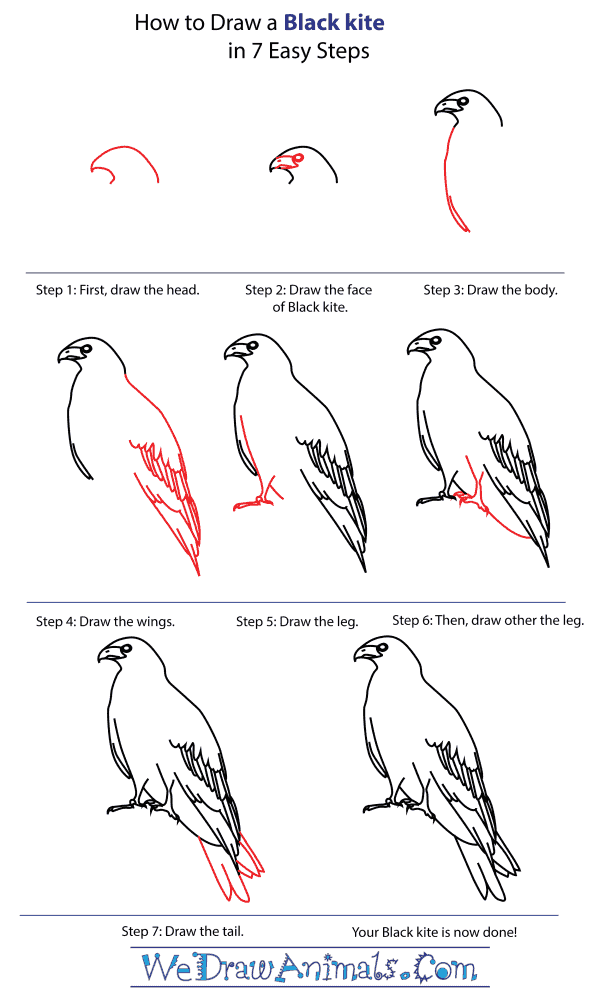In this quick tutorial you'll learn how to draw a Black Kite in 7 easy steps - great for kids and novice artists.
The images above represent how your finished drawing is going to look and the steps involved.
Below are the individual steps - you can click on each one for a High Resolution printable PDF version.
At the bottom you can read some interesting facts about the Black Kite.
Make sure you also check out any of the hundreds of drawing tutorials grouped by category.
How to Draw a Black Kite - Step-by-Step Tutorial
Step 1: A Black Kite is a type of raptor that lives in Asia, Australia, Europe, and Africa. To draw a black kite, start with the head. Draw a curved line for the back of the head, and a smaller one underneath to form the beak and neck.
Step 2: Add the black kite’s beak and an eye. Black kites have excellent eyesight, which helps them to spot their prey when they are flying high in the sky. Don’t forget to add a line for the mouth and a small dot for his nostril.
Step 3: Draw a long slightly curved line for the bird’s chest and another small line for detail.
Step 4: Next, draw the bird’s wing. Draw a long line for his back, and then add lots of feathers. Their wings can stretch from 4-5 feet (140-150 cm) wide!
Step 5: Add one of the bird’s legs by drawing a ‘V’ shape with one side longer than the other. Add a foot with some talons.
Step 6: Next, draw the bird’s other foot. Add a line from the foot to the end of the bird to create the rest of his body.
Step 7: Last, add some pointy tail feathers. Your black kite is done! A black kite’s feathers are a dark brown or black color.
Interesting Facts about Black Kites
Black kites are birds of prey (also known as raptors). Birds of prey are hunting birds, and they are known to have excellent vision that helps them spot their prey while flying. Black kites are native to Australia, Africa, Asia and Europe. There are probably more black kites in the world than any other raptor species.
Did you know?
- The black kite was first discovered in 1866.
- They eat small mammals, lizards, and insects. Most of all, they feed on grasshoppers.
- In the winter, they can be seen in groups called flocks. These flocks usually have hundreds of members.
- Some subspecies in Europe and Asia migrate south to tropical habitats during winter.
- Kites stand out from other birds because they have a forked tail.
- There are more black kites in South Asia than in Europe.
There are five subspecies of black kites. The European black kite is native to Europe and Pakistan. The black-eared kite is from Russia, India, China, and Japan. The small Indian kite is found in the Malayan Peninsula, India, and Pakistan. The fork-tailed kite is native to the Greater and Lesser Sunda Islands in Asia, Papua New Guinea, and Australia. The Taiwan kite is from Taiwan and Hainan in China.








